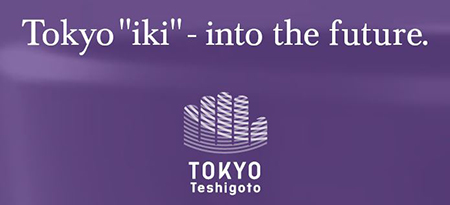Murayama-Oshima Tsumugi
(Textured Silk Pongee)

- Great Edo style casual wear that kimono experts will go for.
- OshimaTsumugi (textured silk pongee), a synonym for a high-quality silk fabric, is produced on Amami-0shima Island. Murayama-OshimaTsumugi brand fabric is made from raw silk, like OshimaTsumugi, and is produced in the Musashimurayama City area of Tokyo. Whereas production of OshimaTsumugi requires time‐consuming mudding of the silk, Murayama- OshimaTsumugi only uses the established Itajime (board-caught) dyeing method to apply the design using boards with engraved patterns. A reasonably priced type of Kimono with a similar texture to that of OshimaTsumugi had been produced for general sale. Its most outstanding feature is a range of delicate Kasuri (splashed) patterns. Kasuri is a technique for creating woven patterns through a process of precise thread bundling of the dyed warp and woof to make patterns. This creates a smooth texture of the fiber threads, which is comfortable and does not stick to the wearer’s skin. Its light weight means that it can be worn without fatigue for long periods. Specifically, Murayama-OshimaTsumugi for men has fine Kasuri patterns and conveys an impression of simple good taste through its intricacy when viewed close up and plainness from a longer view. Meanwhile, design is important in women’s garments and the stylish patterns and colors are suitable for any age. To assure the high quality of Murayama-OshimaTsumugi, certification stamps are only granted to those products that use traditional techniques and materials accepted by Governor and pass stringent inspection based on 28 criteria, including length, weight, absence of flaws, etc.
| Main Areas of Manufacture | Musashimurayama City, Mizuho Town, Akishima City |
|---|---|
| Designation/ Certification Date | February 17th, 1975 (National Certification) December 24th, 1982 (Tokyo Certification) |
| Traditionally Used Raw Materials | Raw silk thread |
Traditional Technologies and Techniques
- Murayama-Oshima Tsumugi (textured silk pongee) is a flat woven textile made using threads that are dyed prior to weaving.
- Kasuri ito (literally "blurred threads") are used as both warp and weft in the textile.
- Designs are hand-matched by manipulating placement of both normal threads and kasuri ito in the warp, and normal threads and kasuri ito in the weft. This produces woven splash patterns within the weave.
- The blurred effect of kasuri ito is created using a dyeing technique called itajime*1.
*1 itajime: This involves the placing of the arranged threads between two engraved plates, which are then bolted together tightly. When immersed in dye, the pressure of the raised points on the plates acts as a dye-resist. This results in threads with a blurred effect.
History and Characteristics
The roots of Murayama-Oshima Tsumugi (textured silk pongee) can be traced back to stripe-pattern woven cotton textiles produced in the Genroku Era (1688-1704) of Edo Japan. During the Bunka Era (1804-1818), Murayama Kasuri*2 textiles were established. It is said that originally both stripe and splash patterns came to Japan due to western trade; such being designs found in southern-style cotton textiles. "Stripes" are patterns comprised of threads in two or more colors, with varied striation appearing in both warp and weft. "Splashes" occur irregularly in the weave and appear as blurred areas in the textiles.
Such techniques were cultivated and refined during the Edo Period by both townspeople and farmers.
Concerning the evolution in Murayama manufacturing areas from striped cotton textiles to Murayama Kasuri, along with cotton-weaving technology development, it might be said that a flowering of culture among Edo townspeople also played a part.
However, from the middle of the Meiji Era (1868-1912) onward, it became possible to produce cheaply-priced cotton textiles of a striped design in other manufacturing areas. Moreover, after the Russo-Japanese War (1904-1905), a time of change was visited upon Murayama Tsumugi production due to the increasing demand for silks. This development ended the triumphs the textile had enjoyed over the previous 100 years.
From around the middle of the Meiji Era, in Murayama manufacturing areas, the production of coarse woven silks, black silk pongee, and striped meisen*3 silk, etc., was carried out. Based on these silk weaving techniques and advanced production technologies acquired over many years, development of a new type of meisen silk was conducted.
Following this, it became possible to introduce technologies such as itajime dyeing, the production of engraved plates for dyeing, and tie-dyeing techniques, etc., from Isesaki, which was an advanced production area for such technologies in Gunma Prefecture. This development represented a major change in the woven textiles from cotton kasuri to Oshima Tsumugi in the Murayama manufacturing areas.
The net result of these developments was the establishment of the basis of today's Murayama-Oshima Tsumugi textiles.
*2 "Murayama Kasuri": This is the dyeing of indigo silk textiles. It involves the use of an unheated, naturally-fermented indigo solution.
*3 "Meisen Silk": This is a woven flat silk textile in which the warp and weft threads are alternated. In meisen silks, by deliberately staggering the colors of the threads used in the warp and weft, a soft appearance is created that seems to blur color boundaries. This effect is known as kasuri (literally "to blur"). Commencing in the Taisho Era (1912-1926) and continuing into the Showa Era (1926-1989), meisen silks were adopted throughout Japan both for everyday kimono worn by women, and also for stylish garments.
Contact Details
| Manufacturing Area Cooperative Name | Murayama Textile Cooperative Association |
|---|---|
| Address | 2-2-1 Honmachi, Musashimurayama City Tokyo 208-0004 |
| TEL | 042-560-0031 |
| Website | http://www.muraori.sakura.ne.jp/ |






